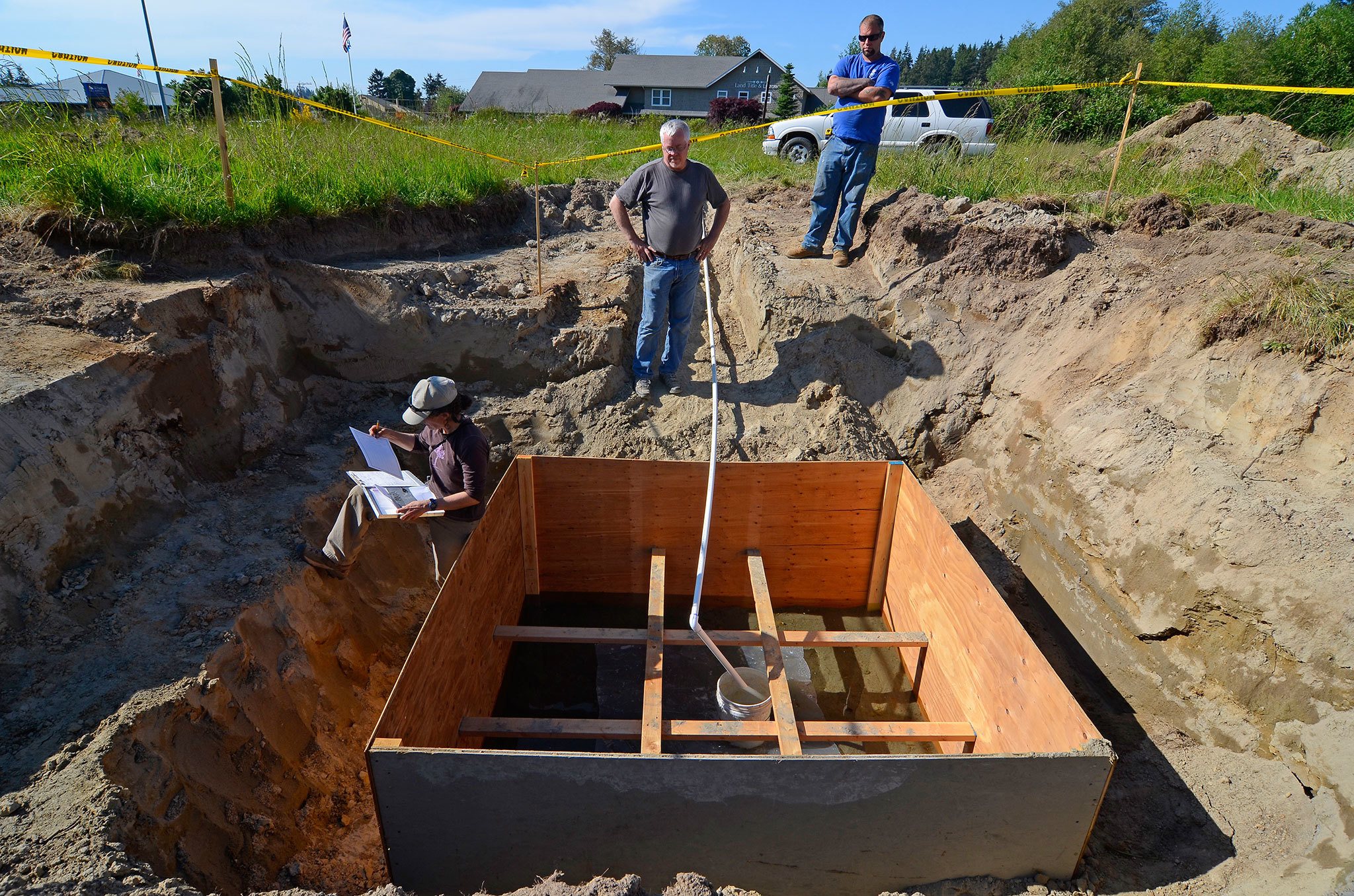The viability of an $800,000 property the Freeland Water and Sewer District purchased late last year for its long-planned sewer project is now in question.
District commissioners recently learned that the board’s chosen method of releasing treated effluent into the ground on the Stonebridge property may be much more expensive and less effective than initially believed. The board says the property can still work as planned, but the cost may simply be too great.
The discovery was a tough blow for the board.
“I can’t even tell you how frustrating this is,” District Commissioner Lou Malzone said.
“Nobody said these Vadose wells may not work.”
The water district has been working for the past several years to bring sewers to downtown Freeland, an area often referred to as the commercial core. It’s a scaled down version of past plans that encompassed most of Freeland, including residential areas.
The latest plan, estimated at 10.2 million dollars, is expected to improve water quality and open the doors for development of land currently used for private drain fields. The current design, however, relies on a 24-acre property the district purchased in September 2015, to house a new treatment plant and an effluent drainage system.
The district chose a technology known as “Vadose Zone” wells as the mechanism to release treated effluent back into the ground; they do the same thing as a large drainage pond but instead of being spread out on the surface the effluent is dispersed via perforated pipes that go 50 feet into the ground.
Using a system of eight wells spread out over 500 feet, four active and four inactive, the property was expected to handle over 60,000 gallons per day. The district’s engineers alerted the board in October that making them work would require additional controls and modifications to the treatment plant to the tune of $800,000, a hefty cost overrun to an already tight and not-fully-funded budget.
District commissioners spent the next month doing some researching and learned that the wells aren’t just more expensive to operate, but that they also have a lifespan of just five to 10 years. The board knew the wells wouldn’t last forever, but it was believed they’d last longer before being required to drill new wells — the price tag for drilling alone is $20,000 each, but the cost doesn’t include labor and materials.
That means increased cost and potentially problems with available space, District Commissioner John Brunke said.
“The worst possible scenario is that we exhaust the potential of the property with the disposal of the effluent,” Brunke said.
Malzone acknowledged the news came as a surprise and was alarming. Before the board OK’d the purchase of the property last year, it hosted a public meeting with state and county officials.
“We asked if there are any showstoppers here, and the answer was ‘No, there are no showstoppers,’ ” he said.
It’s particularly frustrating because this is a problem the district has run into before. A prior board working on a larger plan spent $250,000 on a Bush Point property for a treatment plant and $645,000 on a Trillium property for drainage, only to learn later that they were not cost effective or simply wouldn’t work for their intended use.
The district not only still owns the properties, but a new board of commissioners may have found itself in the same situation, one where it purchased property hamstrung by drainage issues.
“It’s exactly where we were in 2005,” Malzone said.
But the jury may not be out yet. The board met with its engineers again this month and heard a $200,000 proposal for two test wells. It’s a step in the right direction, making infiltration rates more clear, but they won’t nail down the wells’ lifespans.
The board tabled the proposal and is trying to figure out now how the unanticipated costs would affect ratepayers. If it’s too much, Malzone said the board may go back to the county and report that the sewer plan is “not financially feasible.”
The board is planning to meet soon with FCS Group, a paid rate consulting firm, to discuss the costs to ratepayers and hold another workshop to brainstorm ways to reduce the $800,000 overrun for the wells.
Malzone and Brunke both said keeping costs down and keeping the project affordable was a top priority of the board.



